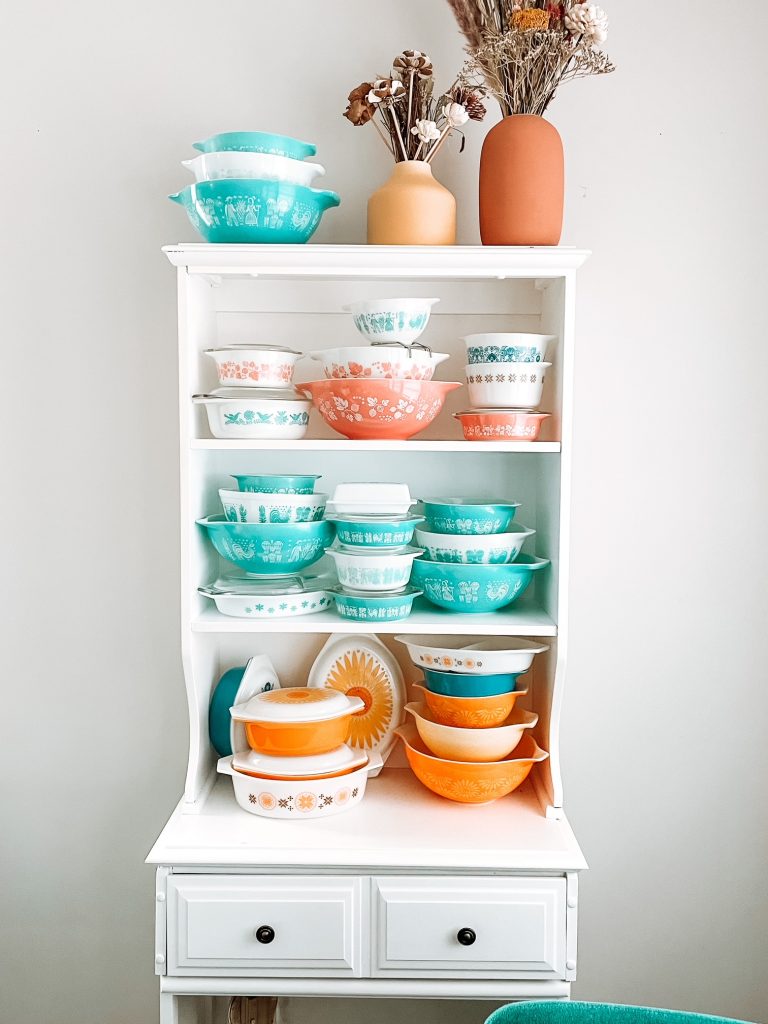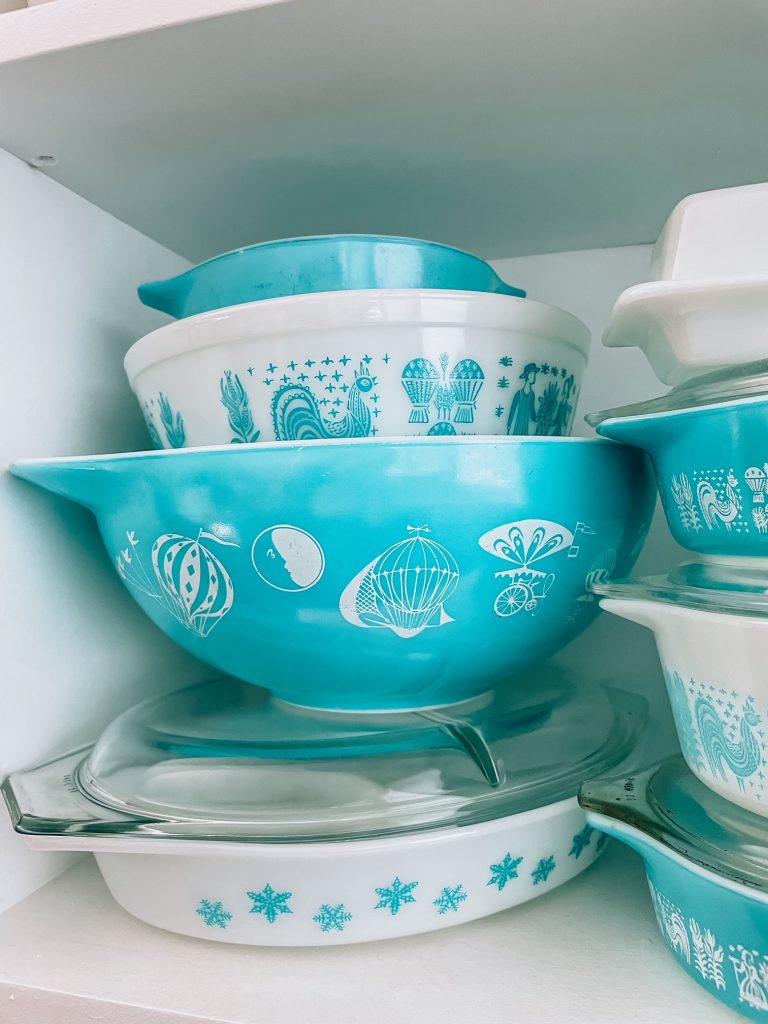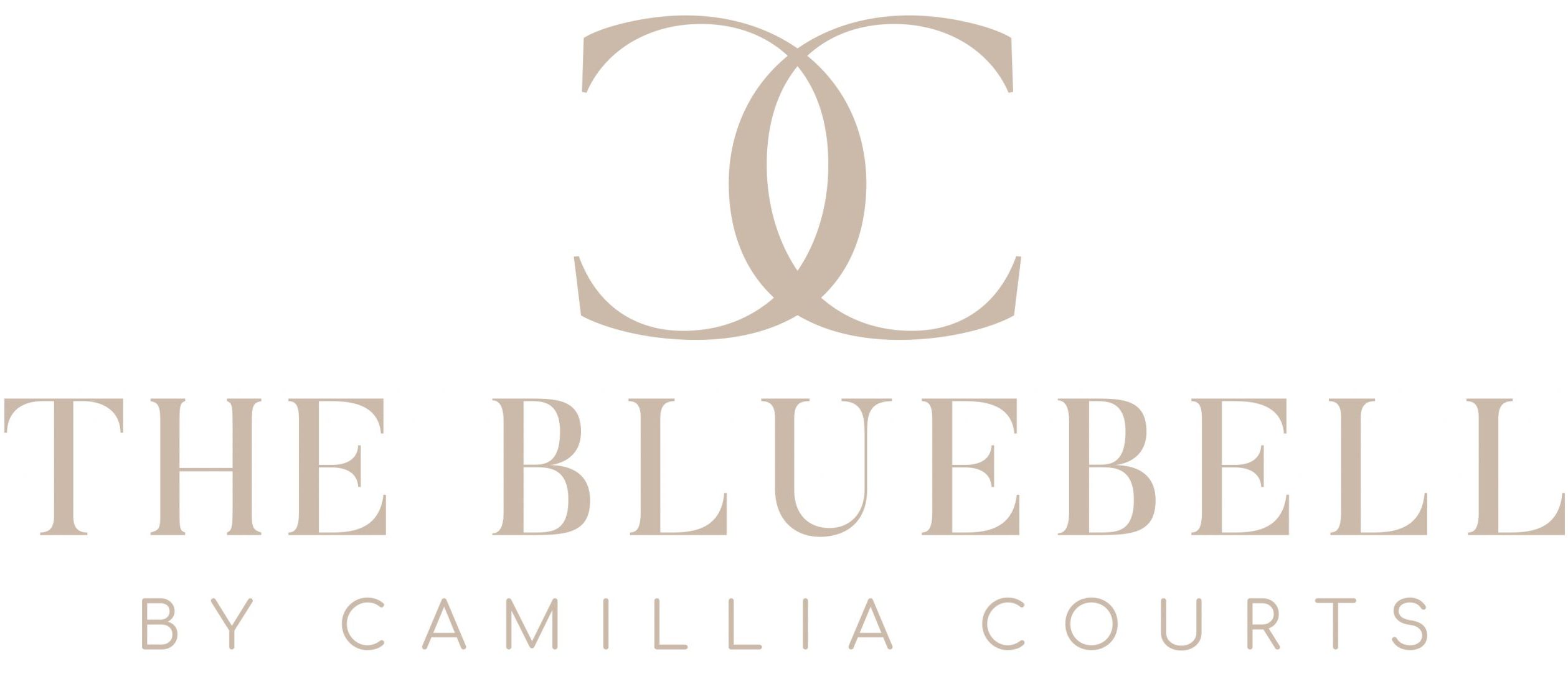
Pyrex Passion: From a $20 Find to a Collection of 100 Treasures

It’s 2021, and I stumble upon this adorable turquoise Amish Butterprint bowl on Facebook Marketplace. It’s only $20, and I think, why not? I’ll start a small, modest collection, nothing too fancy. Fast forward to today, and my shelves are practically bursting with over 100 vintage Pyrex pieces.
Honestly, I had no idea what I was getting myself into when I bought that first bowl. The thrill of the hunt and scoring a bowl I’ve been searching for is a great feeling and now, I’m fully immersed in the wild and wonderful world of Pyrex collecting. There’s just something about those vibrant colors and iconic patterns that pulls me in.
So, here we are, surrounded by these little pieces of history that have captured the hearts of collectors everywhere that remind me of big Christmas dinners at my grandma’s. And in this blog post, I’m going to go over what to look for and what to leave.

Start with the Basics: Begin your Pyrex journey by familiarizing yourself with the basics. Pyrex, known for its durable glassware, was first introduced in the early 20th century and gained popularity for its ability to withstand high temperatures and resist staining. Vintage Pyrex pieces are often characterized by their colorful patterns, including iconic designs like the “Gooseberry,” “Butterprint,” and “Primary Colors.” Often the brighter colours are more sought after and go for a higher price.
In my opinion, Pyrex manufactured after 1998 isn’t worth collecting. This is because in 1998, Corning acquired Pyrex and altered the formula. But to each their own!
What to Look For: When hunting for Pyrex treasures, keep an eye out for pieces in good condition, free from chips, cracks, or excessive wear. Look for vibrant colors and crisp patterns, bowls that have been put in the dishwasher are matte and patchy. Additionally, check for markings on the bottom of the Pyrex, including the manufacturer’s stamp, pattern name, and model number, which can help you identify the age and rarity of the piece.
Where to Find Pyrex: Pyrex pieces can be found in a variety of places, including antique shops, flea markets, thrift stores, and online marketplaces like eBay and Etsy. Keep an eye out for estate sales and garage sales, where you may stumble upon hidden gems at bargain prices. Don’t be afraid to ask sellers about their inventory or negotiate prices – you never know what treasures you may uncover! My two most coveted pieces came from my mother-in-law and her neighbor!
Tips for Care and Maintenance: Once you’ve started building your Pyrex collection, it’s important to take care of your pieces to ensure they remain in good condition for years to come. Hand wash Pyrex pieces with mild detergent and avoid subjecting them to extreme temperature changes, which can cause thermal shock and lead to cracking or breakage. NEVER put your Pyrex in the dishwasher! Display your Pyrex collection proudly, but be mindful of exposure to direct sunlight, which can fade colors over time.
Connect with Fellow Collectors: Joining Pyrex enthusiast groups and online communities is a great way to connect with fellow collectors, share your finds, and learn from others. Whether you’re swapping tips for finding rare pieces or showcasing your latest acquisitions, the Pyrex community is a welcoming and supportive space for enthusiasts of all levels.

Whether you’re a seasoned collector or just starting your Pyrex journey, there’s something magical about hunting for treasures and uncovering pieces of the past. So grab your shopping bags and get ready to embark on a Pyrex adventure – you never know what treasures you may find!



